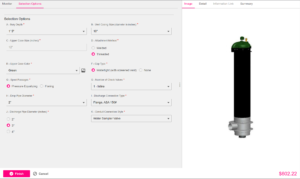A Deep Dive into How Configure, Price, Quote Systems Operate
At its core, CPQ stands for Configure, Price, Quote. It’s a technology-driven solution designed to simplify the process of creating accurate and customized quotes for customers. CPQ systems empower sales teams to configure complex products or services, determine accurate pricing, and generate quotes quickly—all while ensuring consistency, accuracy, and alignment with business rules, but let’s dive into just how this is all powered.
The Core Components of CPQ Systems:
Product Configuration Rules: At the heart of CPQ systems lies the product configuration rules. These rules define what combinations of product features and options are permissible and feasible. For instance, with the guided selling process if a customer selects a specific feature, the rules engine will ensure that incompatible options are not included in the configuration. This not only ensures accuracy but also prevents unrealistic or non-manufacturable combinations.
Pricing Algorithms: Determining the right price for a customized product can be a labyrinthine task. CPQ systems simplify this challenge with advanced pricing algorithms. These algorithms consider a multitude of factors, including material costs, labor, market conditions, and even competitor pricing. The result is a price that is not only competitive but also aligned with the company’s profitability goals.
Quoting Templates: Crafting a professional and comprehensive quote is an art. CPQ systems provide quoting templates that guide sales representatives in presenting information to customers. These templates could include documents, drawings, legal terms, and a breakdown of the product’s features, pricing, and options. Quoting templates ensure consistency in communication and reflect the company’s branding and professionalism.
How CPQ Systems Work
Input of Customer Requirements: Users, typically sales representatives, input the specific requirements and preferences of the customer into the CPQ system. This could include the desired features, quantities, specifications, and any unique customization requests, inventory on hand or availability in that defined market.
Configuration and Rule Application: The CPQ system’s configuration engine processes the customer’s inputs and applies the predefined configuration rules. It then generates a feasible and accurate product configuration that aligns with the customer’s needs. This could be products, process or systems.
Pricing Calculation: Once the configuration is determined, the pricing algorithms come into play. They factor in all relevant considerations, including costs, discounts, and pricing strategies. The pricing information can be used and stored globally across all departments for a single source of truth. Pricing information is also permission based. Allowing further control and personalization.
Quote Generation: With the accurate configuration and pricing in hand, the CPQ system assembles this information into a professional quote. The quoting template can be personalized to your business needs.
Integration Capabilities: CPQ systems often integrate with other business systems like Customer Relationship Management (CRM), Enterprise Resource Planning (ERP), and Product Lifecycle Management (PLM) systems. This integration ensures that data is consistent and up-to-date across the organization.
Conclusion
By using CPQ manufacturers of custom and complex products can turn daily challenges into opportunities to provide custom tailored products or solutions to their customers quickly, seamlessly, and confidently while maintaining operational efficiencies and customer satisfaction.


